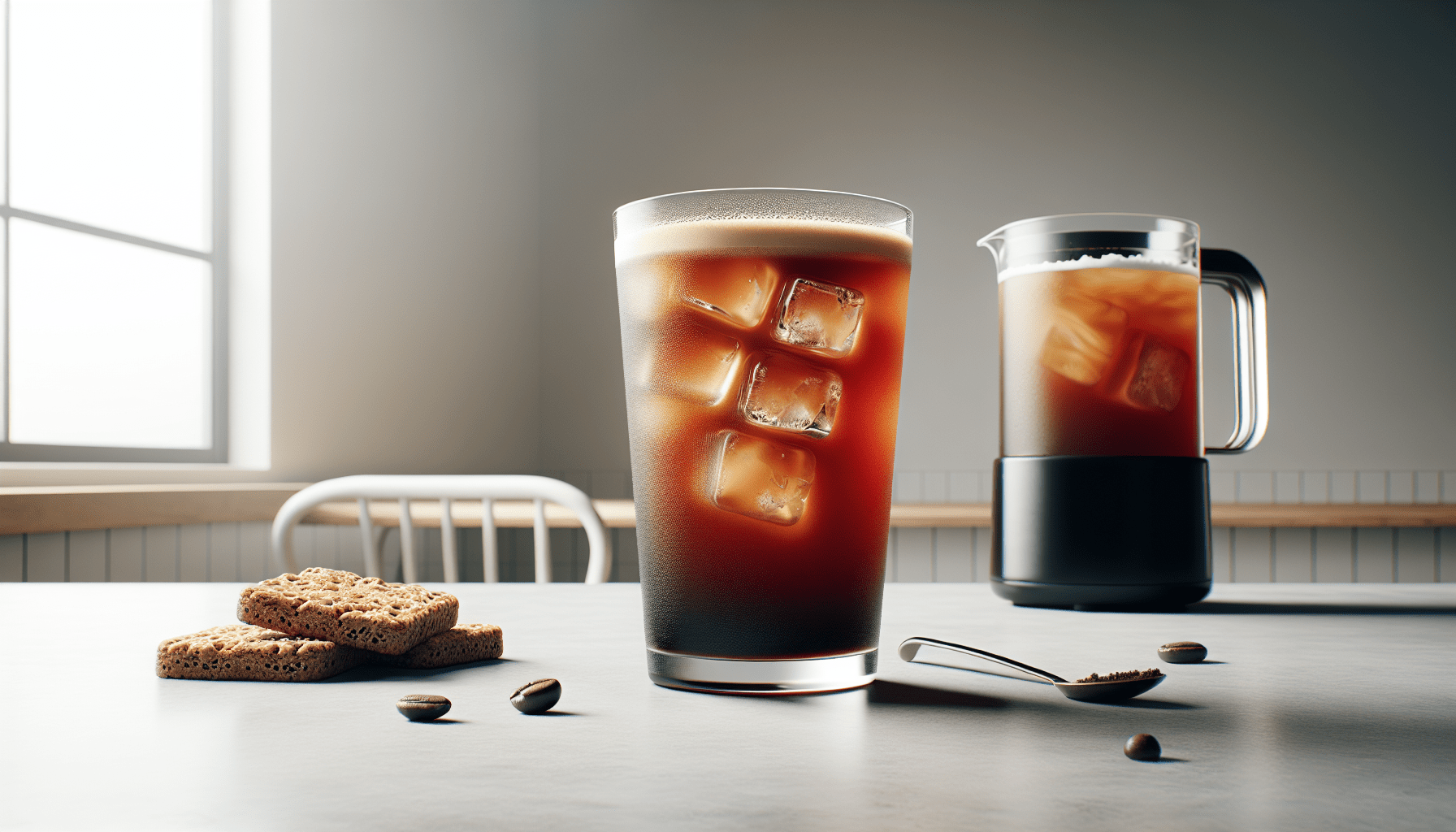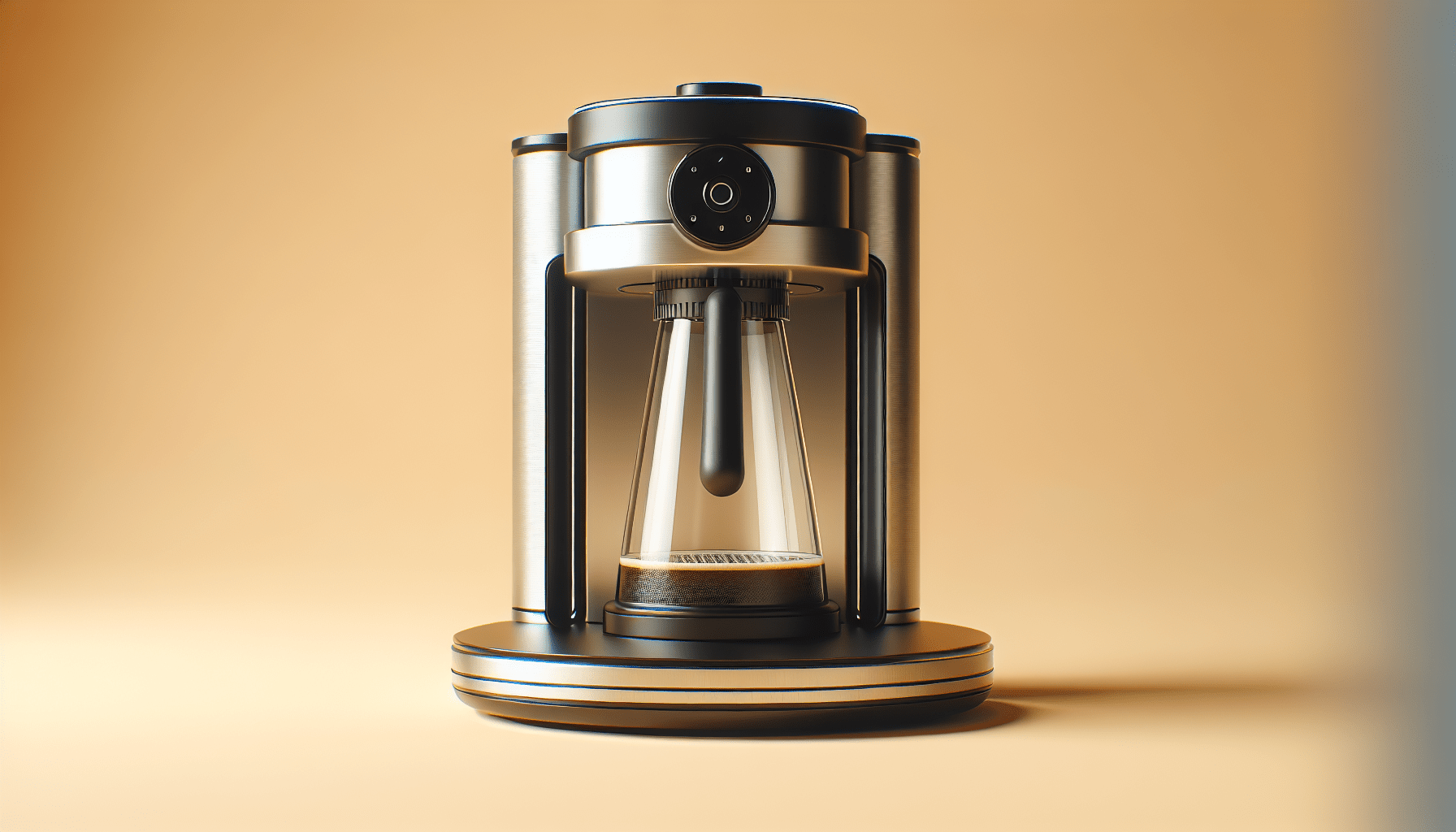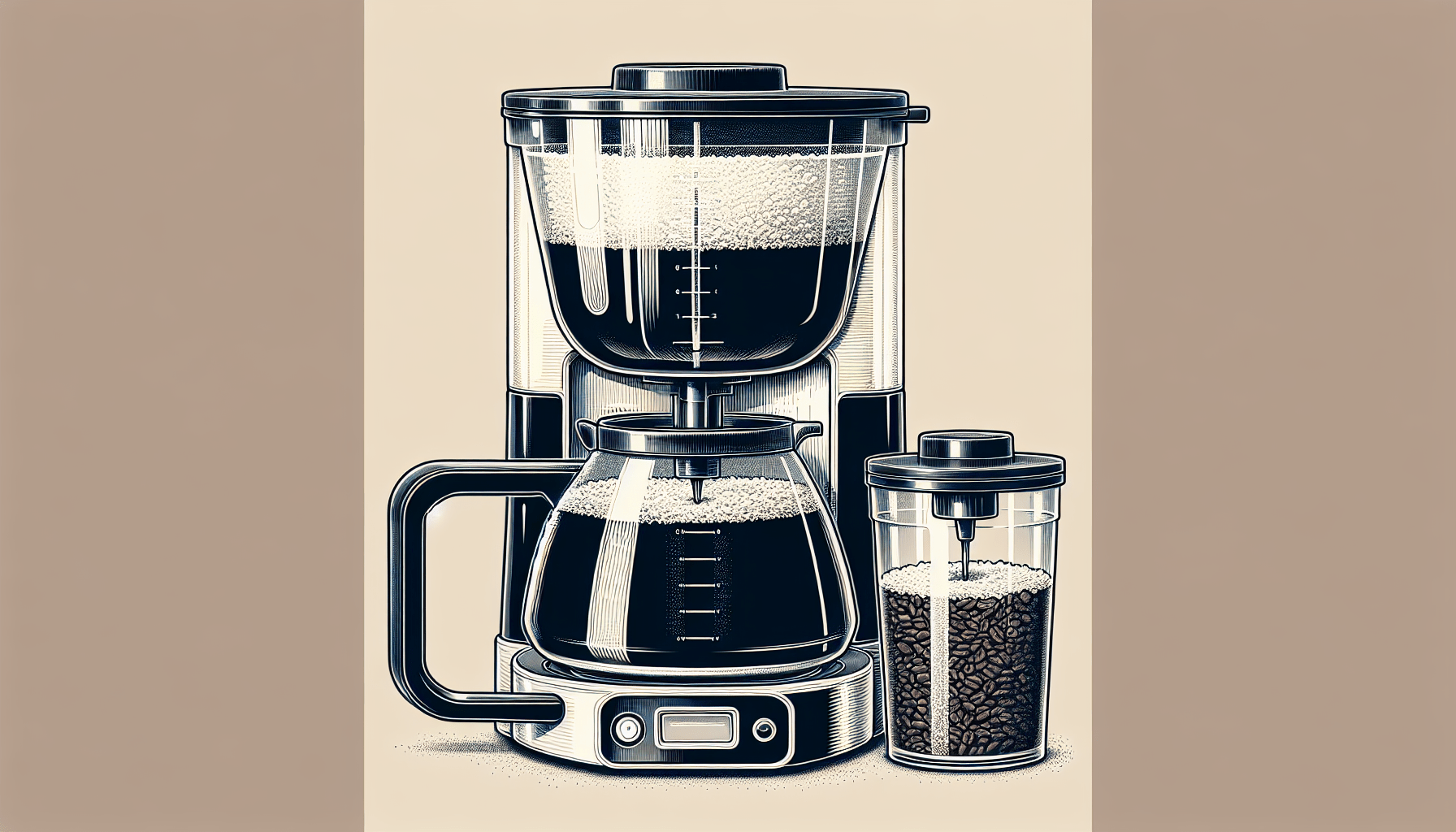If you’re a fan of both cold brew and kombucha, you might be wondering if you can kill two birds with one stone and use your cold brew maker to make this probiotic-packed beverage. The short answer is yes, you can! In fact, using a cold brew maker to make kombucha not only saves you time and effort, but it also ensures a smooth and delicious brew every time. Let’s dive into how to use your cold brew maker for making kombucha and explore the benefits of this convenient method. Get ready to elevate your kombucha brewing game!
Understanding Cold Brew
What is Cold Brew?
Cold brew is a method of brewing coffee or tea that involves steeping coarsely ground coffee beans or tea leaves in cold or room temperature water for an extended period of time. Unlike traditional hot brewing methods that rely on heat to extract flavor quickly, cold brew harnesses the power of time to create a smoother, less acidic beverage.
How does Cold Brew work?
The cold brewing process involves immersing the coffee grounds or tea leaves in water for an extended period of time, typically between 12 and 24 hours. During this time, the water slowly extracts the flavors, oils, and caffeine from the grounds or leaves, resulting in a concentrated liquid known as cold brew. This concentrate is typically mixed with water or other ingredients to create a refreshing, flavorful beverage.
Benefits of using a Cold Brew maker
Using a cold brew maker offers several advantages over traditional brewing methods. First and foremost, it produces a smoother and less acidic brew, making it a great option for those with sensitive stomachs or acid reflux. The slow extraction process also brings out more of the subtle flavors and aromas of the coffee or tea, resulting in a more nuanced and complex beverage. Additionally, cold brew can be stored in the refrigerator for several days, allowing for a convenient and ready-to-drink supply of your favorite brew.
Introduction to Kombucha
What is Kombucha?
Kombucha is a fermented tea drink that has gained popularity in recent years due to its probiotic benefits and unique taste. It is made by fermenting sweetened tea using a symbiotic culture of bacteria and yeast (SCOBY), which transforms the sugar into various compounds such as organic acids, vitamins, and enzymes.
How is Kombucha made?
To make kombucha, a SCOBY is added to sweetened black or green tea and left to ferment for a period of time, typically around one to two weeks. During fermentation, the SCOBY consumes the sugar and produces a range of beneficial compounds, resulting in a tangy and slightly fizzy beverage. The kombucha can be flavored with fruits, herbs, or spices to add additional layers of taste.
Health benefits of Kombucha
Kombucha has been praised for its potential health benefits. It is a rich source of probiotics, which are beneficial bacteria that support gut health and digestion. The fermentation process also results in the production of organic acids, such as acetic acid and gluconic acid, which have been associated with various health benefits, including improved immune function and detoxification. Additionally, kombucha contains antioxidants and polyphenols, which contribute to its potential anti-inflammatory and antimicrobial properties.
Compatibility of Cold Brew Maker and Kombucha
Similarities between Cold Brew and Kombucha process
Both cold brew and kombucha involve steeping ingredients in liquid for a period of time to extract flavors and compounds. In both cases, the final product is typically mixed with water or other ingredients to create a drinkable beverage.
Differences in brewing techniques
While there are some similarities between cold brew and kombucha, there are also significant differences in the brewing techniques. Cold brew involves steeping coffee or tea in water, whereas kombucha requires fermenting sweetened tea using a SCOBY. The fermentation process in kombucha introduces active cultures and converts sugar into other compounds, creating a distinct tangy and slightly effervescent taste.
Can a Cold Brew maker be used for making Kombucha?
While it is possible to use a cold brew maker for making kombucha, there are a few considerations to keep in mind. Cold brew makers are specifically designed for steeping coffee or tea, not for the fermentation process required in kombucha making. Therefore, modifications to the cold brew maker may be necessary to create an environment conducive to the fermentation process.
Pros and Cons of Using a Cold Brew Maker for Making Kombucha
Advantages of using a Cold Brew maker
One advantage of using a cold brew maker for making kombucha is the convenience it offers. Cold brew makers are designed to simplify the steeping process, making it easier to achieve consistent results. They are also typically equipped with filters or strainers to separate the liquid from the solids, which can be beneficial when working with a SCOBY. Additionally, cold brew makers often have larger capacities compared to traditional kombucha brewing vessels, allowing for larger batches of kombucha to be made at once.
Disadvantages of using a Cold Brew maker
Despite the advantages, there are also some disadvantages to using a cold brew maker for making kombucha. The primary issue is the lack of proper fermentation conditions that a cold brew maker provides. Kombucha requires specific temperature ranges, airflow, and an airtight environment to ensure successful fermentation. Cold brew makers are not designed with these considerations in mind and may not provide the necessary conditions for optimal fermentation.
Considerations for using a Cold Brew maker for Kombucha
If you decide to use a cold brew maker for making kombucha, it is important to make modifications to the machine to create an environment suitable for fermentation. These modifications may include adjusting the temperature control, ensuring proper airflow, and ensuring an airtight seal. It is also important to monitor the brew carefully and make any necessary adjustments to ensure a healthy and successful fermentation process.
Modifying a Cold Brew Maker for Kombucha Making
Understanding the modifications required
Modifying a cold brew maker for kombucha making involves making adjustments to the machine to create the necessary fermentation conditions. This may include modifying the temperature control, ensuring proper airflow, and ensuring an airtight seal.
Step-by-step guide for modifying a Cold Brew maker
-
Adjust the temperature control: Depending on the model of the cold brew maker, it may be necessary to override the default temperature settings to achieve the optimal temperature range for kombucha fermentation. Consult the user manual or contact the manufacturer for instructions on adjusting the temperature control.
-
Ensure proper airflow: Kombucha fermentation requires oxygen for the SCOBY to thrive. Modify the cold brew maker to allow for adequate airflow, either by leaving the lid slightly ajar or by adding small ventilation holes.
-
Ensure an airtight seal: While airflow is important, it is also crucial to maintain an airtight environment to prevent contamination. Check the cold brew maker for any gaps or areas where air can escape and seal them accordingly using food-grade silicone or other appropriate materials.
Equipment and supplies needed for the modifications
To modify a cold brew maker for kombucha making, you may need the following equipment and supplies:
- Screwdriver or other tools for adjusting temperature controls
- Food-grade silicone or other appropriate sealing materials
- Small drill or hole punch for creating ventilation holes (if necessary)
Alternative Methods for Making Kombucha
Traditional brewing method
The traditional method of making kombucha involves using a glass jar or vessel that provides the ideal conditions for fermentation. This method typically requires a separate brewing vessel, along with fabric covers and rubber bands to allow for airflow while keeping out contaminants.
Using a dedicated Kombucha brewing vessel
Dedicated kombucha brewing vessels are specifically designed to provide the optimal conditions for fermentation. They often come equipped with built-in temperature control, ventilation systems, and easy-to-use spigots for sampling and bottling the kombucha.
Other alternative methods
There are various other methods and tools available for making kombucha, such as continuous brewing systems, kombucha kits, and fermentation crocks. Each method has its own strengths and considerations, so it is important to research and choose the method that best suits your needs and preferences.
Tips for Using a Cold Brew Maker for Kombucha
Selecting the right type of Cold Brew maker
When using a cold brew maker for kombucha, it is important to select a model that can be easily modified and has the necessary features for creating the optimal fermentation conditions. Look for a cold brew maker with adjustable temperature controls, adequate airflow, and airtight seals.
Proper sanitation and cleaning
Maintaining proper sanitation and cleanliness is crucial when brewing kombucha, regardless of the method used. Before using a cold brew maker for kombucha, ensure that it is thoroughly cleaned and sanitized to minimize the risk of contamination.
Monitoring and controlling fermentation
Using a cold brew maker for kombucha requires careful monitoring of the fermentation process. Regularly check the temperature, pH levels, and the appearance of the SCOBY. Make any necessary adjustments to maintain optimal fermentation conditions and ensure a healthy and successful batch of kombucha.
Common Issues and Troubleshooting
Mold growth
One common issue when brewing kombucha is the growth of mold. Mold should be treated seriously and any contaminated batches should be discarded to prevent potential health risks. To prevent mold growth, ensure proper sanitation, maintain optimal fermentation conditions, and monitor the brew closely for any signs of contamination.
Carbonation issues
Carbonation is an important characteristic of kombucha, providing a refreshing effervescence. If your kombucha lacks carbonation, it may be due to a variety of factors, including insufficient sugar, improper fermentation temperature, or not sealing the containers tightly enough. Experimenting with different techniques and adjusting the brewing parameters can help achieve the desired level of carbonation.
Off-flavors in Kombucha
Sometimes, kombucha may develop off-flavors that are unpleasant or undesirable. This can be caused by a variety of factors, such as improper fermentation conditions, contamination, or over-fermentation. To minimize the risk of off-flavors, maintain proper brewing conditions, conduct regular taste tests, and discard any batches that exhibit off-flavors.
Safety Considerations
Risks associated with using a Cold Brew maker
Using a cold brew maker for kombucha poses certain risks, primarily related to the modifications made to the machine. It is important to ensure that any modifications are performed safely and with appropriate materials to avoid any potential hazards.
Precautions to minimize risks
To minimize the risks associated with using a cold brew maker for kombucha, follow these precautions:
- Read and follow the manufacturer’s instructions for modifying the cold brew maker.
- Use appropriate tools and materials for any modifications.
- Ensure proper ventilation and temperature control.
- Regularly monitor the kombucha batch for any signs of contamination.
- Practice proper sanitation and cleanliness throughout the brewing process.
Ensuring food safety standards
When brewing kombucha or any other fermented food or beverage, it is important to adhere to food safety standards. This includes using clean and sanitized equipment, using high-quality ingredients, and maintaining proper fermentation conditions. Following these standards is crucial for preventing any potential foodborne illnesses and ensuring the safety of your homemade kombucha.
Conclusion
Summary of using a Cold Brew maker for Kombucha
In conclusion, while it is possible to use a cold brew maker for making kombucha, it requires careful modifications and considerations to create the optimal fermentation conditions. Cold brew makers offer convenience and larger capacities, but they lack certain features necessary for successful kombucha fermentation.
Final thoughts and recommendations
If you are considering using a cold brew maker for making kombucha, it is important to weigh the advantages and disadvantages, and carefully follow the necessary modifications and precautions. Alternatively, traditional kombucha brewing methods and dedicated kombucha brewing vessels may provide a more suitable and straightforward approach.
Regardless of the method chosen, proper sanitation, monitoring, and attention to brewing parameters are key to achieving a delicious and safe batch of homemade kombucha. Enjoy the journey of brewing your own kombucha and reap the benefits of this probiotic-rich and refreshing beverage.




